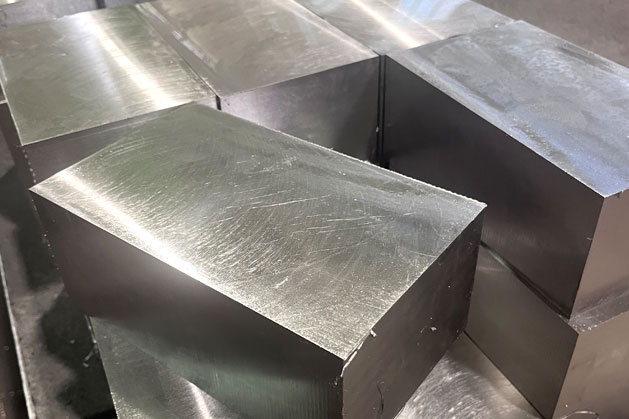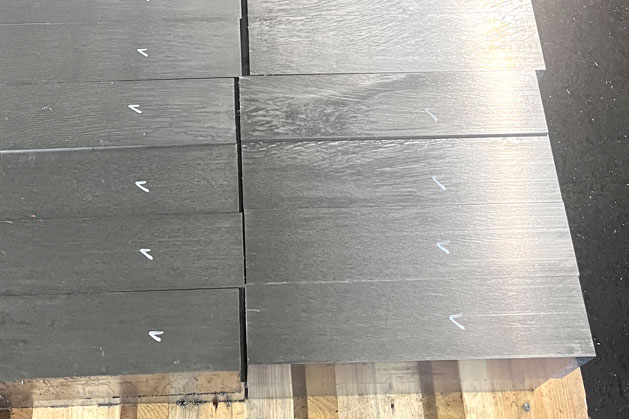1.3912 cut to your desired dimensions
Iron–nickel alloy with an extremely low coefficient of thermal expansion at cryogenic temperatures down to approximately -260 °C. Suitable for the production of thermally stable components (high strength / toughness). The material of choice for precision components!
Fields of application:
Material 1.3912 is used for the production, storage, and transport of liquefied gases. It is employed in medical technology as well as in measuring and control devices for temperatures below -200 °C, for example in thermostats. Further applications include optical and laser-based components, tools for the manufacturing of composite components - particularly in the aerospace industry - submarine construction, and various uses in the aerospace sector.
Properties:
| Polishability | n/a |
| Machinability | The annealed condition is preferred for machining. The chip-forming machining characteristics of 1.3912 are similar to those of austenitic stainless steels. |
| Forgeability | 1.3912 can be hot-formed in the temperature range between 1050°C and 800°C, followed by rapid cooling in water or in air. |
| Corrosion resistance | In a dry atmosphere, 1.3912 is corrosion-resistant at room temperature. Under unfavorable conditions, such as in a humid atmosphere, corrosion in the form of rust may occur. |
| Corrosion class | n/a |
Physical properties:
| Density | 8,1 |
| Electrical resistivity at 20°C (Ω mm2 /m) | 0,076 |
| Thermal conductivity at 20°C (W/m K) | 10,0 W/m · °C |
| Specific heat capacity at 20°C (J/kg K) | 0,6 – 1,4 |
| Magnetic properties | Ferromagnetic below the Curie temperature and non-magnetic at temperatures above it. |
Special properties:
| - Nickel–iron alloy with low thermal expansion |
| - Low coefficient of thermal expansion at temperatures down to -250 °C |
| - 1.3912 retains its thermal properties even under large temperature variations |
Mechanical properties:
| Hardness | max. 146 HB |
| 0,2 % proof strength | 310 |
| Tensile strength | min. 490 Mpa |
| Elongation at break (transverse) | min. 42% |
| Impact energy (ISO-V) longitudinal | 132 J/cm² |
Processing:
| Cold forming | During cold forming, the workpiece should be in the annealed condition. 1.3912 exhibits work hardening similar to austenitic stainless steels. |
| Cold heading | n/a |
| Open-die and closed-die forging | yes |
| Machining | The chip-forming machining characteristics of 1.3912 are similar to those of austenitic stainless steels. |
Heat treatment:
| Forging | 1.3912 can be hot-formed in the temperature range between 1050 and 800°C. |
| Welding | Similar recommendations apply as for other nickel alloys. |
| Soft annealing | Soft annealing should be carried out at temperatures between 820 and 900°C, followed by air cooling. |
| Stress relief annealing | Stress relief annealing is performed at temperatures below 360°C. |
| Hardening | Not suitable for hardening. |
| 1.3912 | C | Si | Mn | P | S | Cr | Mo | Ni | Co | N |
|---|---|---|---|---|---|---|---|---|---|---|
| min. | 35,0 | |||||||||
| max. | 0,10 | 0,50 | 0,50 | 0,025 | 0,025 | 0,5 | 0,5 | 37,0 | 0,5 | 0,10 |
Flat steel, forged, solution-annealed/quench-hardened

The processing with the saw is a mechanical processing of the material, which results in a significantly lower unintended deformation and increased hardness for the existing structure, such as the thermal cutting.
Thus, the machined workpiece has a homogeneous structure even at the edge, which does not change in the continuation of the material.
This circumstance allows immediate finishing of the workpiece with milling or drilling . So it is not necessary to anneal the material or make a similar operation beforehand.
Do you have any questions?
We are happy to answer your questions and make you an offer for these and other materials. Contact us now for more information.

Your contact person Kevin Simon Bräunig+49 (0) 35263-665-27braeunig@stahlportal.com
Notice: Specifications contained in following data sheet are provided as a description, liability is excluded!



